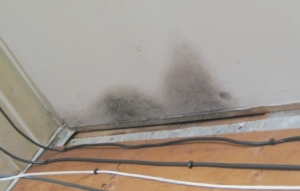Mold Illness Studies
 Can exposure to toxic mold cause health issues? Is there a link between water-damaged buildings and neurological dysfunction, sinus and respiratory problems, and other chronic health conditions?
Can exposure to toxic mold cause health issues? Is there a link between water-damaged buildings and neurological dysfunction, sinus and respiratory problems, and other chronic health conditions?
When seeking medical treatment, many mold-exposed individuals are met with skepticism by physicians. Family members or loved ones may dismiss the connection.
The document linked below offers a comprehensive list of studies that may be shared with those who question the connection between water-damaged buildings and adverse health conditions.
Examples of these studies include:
- Mould exposure at home relates to inflammatory markers in blood.
- Sarcoidosis, asthma and asthma-like symptoms among occupants of a historically water-damaged office building.
- The validity of the environmental neurotoxic effects of toxigenic molds and mycotoxins.
- Stachybotrys chartarum, trichothecene mycotoxins, and damp building-related illness: new insights into a public health enigma.
There are currently more than 300 studies linking exposure to toxigenic contaminants found in water-damaged buildings with adverse health outcomes.
This document is the work of the late toxicologist Dr. Jack Thrasher and Dr. Irene Grant, along with momsAWARE. We hope this serves as a valuable resource for those seeking to validate an illness or educate the medical community.
Click for PDF Download: momsAWARE List of References on Mold Illnesses
Environmental Health Survey for the Workplace
 Are you experiencing health issues that seem to relate to your workplace? Are your coworkers reporting similar symptoms? Do you wonder if mold or other indoor air contaminants might be to blame?
Are you experiencing health issues that seem to relate to your workplace? Are your coworkers reporting similar symptoms? Do you wonder if mold or other indoor air contaminants might be to blame?
A 1984 World Health Organization Committee report suggests that up to 30 percent of new and remodeled buildings worldwide may be the subject of excessive complaints related to indoor air quality (IAQ).
The following survey is designed to be a tool in the assessment of a building's safety by gathering feedback from its employees. (Please note: The survey is not intended to be a substitute for medical advice.)
Click for PDF download: Environmental Health Survey for the Workplace
Symptoms of Fungal Exposure
The following is excerpted from the Mold-Help website.
Fungi, which include yeasts, moulds, smuts and mushrooms, are responsible for causing four types of mycotic (fungal) disease:
1. Hypersensitivity - an allergic reaction to moulds and spores
2. Mycotoxicosis - poisoning by food products contaminated by fungi
3. Mycetismus - the ingestion of preformed toxin (toadstool poisoning)
4. Infection - systemic (Mycotoxicosis, the subject below)
These are the most common symptoms of fungal exposure (bear in mind, people never fit all of below criteria). Most people with some forms of Mycotoxicosis meet at least 8 (recent symptoms) of the following criteria:
Allergy vs. Toxic Exposure
People often assume that a reaction to toxic mold is an allergic one. This excerpt from an article on the MCS America website helps to alleviate this confusion.
Q: What is the difference between a chemical allergy and a chemical toxicity?
A: An allergy produces hay fever-like symptoms such as sneezing, runny nose, itching, nasal stuffiness, watering eyes, wheezing, and coughing. Allergy symptoms, while difficult, are generally regarded as different degrees of a nuisance. The symptoms are usually easily observable by a physician and therefore are easily accepted and diagnosed. Diagnosis can be confirmed with typical allergy tests for elevated immunoglobulin E (IgE).
The symptoms of chemical toxicity are typically neurological and include headache, extreme fatigue, dizziness, weakness, nausea, disorientation, memory problems, slowed reaction time, peripheral neuropathy, sensory neuropathy, and personality/mood changes. Other symptoms may include respiratory difficulty, rash, burning sensations in the nose and mouth, and gastrointestinal disorders. Serious toxicity may result in impaired speech, seizures, stroke, and paralysis.
WHO Guidelines on Indoor Air Quality
The World Health Organization (WHO) released a set of guidelines in 2009 targeting damp indoor environments. The guidelines state that "the most important means for avoiding adverse health effects is the prevention or minimization of persistent dampness and microbial growth on interior surfaces and in building structures." This is a significant conclusion and will prove pivotal in the days ahead.
The accompanying press release stated, "In many EU countries, 20–30% of households have problems with dampness. Strong evidence indicates that this is a risk to health. In damp conditions, hundreds of species of bacteria and fungi grow indoors and emit spores, cell fragments and chemicals into the air. Exposure to these contaminants is associated with the incidence or worsening of respiratory symptoms, allergies, asthma and immunological reactions."
The document is extensive and is the result of a rigorous two-year review of the research done by 36 leading experts worldwide.
The guidelines also conclude that occupants of damp or moldy buildings, both private and public, have up to a 75 percent greater risk of respiratory symptoms and asthma.

